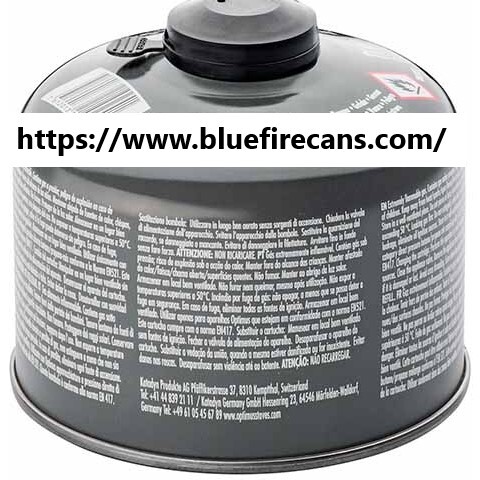
Related Blogs
Will Bluefire Valve Integration Practices Lower Post Fill Rejection Rates
7 minutes, 37 seconds
-8 Views 0 Comments 0 Likes 0 Reviews

In conversations about industrial sustainability and safe handling that often make the news, practical production choices carry real weight. A Refrigerant Gas Can Factory that builds waste reduction into forming, coating and packing steps can cut material loss and lower downstream disposal pressure. Pairing that factory mindset with attention to valve compatibility and component sourcing — for example working alongside an experienced Aerosol Valve Manufacturer during design reviews — helps operations reduce rejects and improve lifecycle outcomes.
The path to less waste begins on the coil. Designers who plan sheet utilisation and nesting patterns reduce offcut scrap before a single cup or body is formed. Efficient blanking and drawing minimize rework and keep more material in the production stream. When the line layout reduces unnecessary handling between presses and flanging stations, fewer units sustain cosmetic damage that would otherwise be scrapped or downgraded. These early savings add up across high volume runs and make the remainder of the supply chain easier to manage.
Coating and finishing choices matter for both product protection and end of life recovery. Factories that prefer water based finishes and that avoid coatings which complicate recycling help reclaimers process returned metal more effectively. Choosing internal linings compatible with intended formulations prevents corrosion that would force premature disposal, while exterior coatings designed for recovery reduce the need for energy intensive stripping steps at recycling facilities. Those decisions make packaging less of an environmental headache without compromising on shelf presentation.
Valve selection and integration are a key stage where waste can be reduced. When valve seats and stems are specified to match expected product chemistry and when assembly tolerances are controlled, fewer filled units fail leak tests. A collaborative design process between can and valve teams reduces mismatch issues that typically cause filled cans to be rejected. Options such as a pressure relief device fitted on the can bottom provide graded protection which can reduce catastrophic loss and the associated material waste in handling incidents.
Automation and inline inspection shrink the pool of potential rejects. Fully automatic production lines that include vision checks, seal verification and torque controlled valve seating detect anomalies immediately, allowing teams to correct process drift before a full batch is produced. Automated metering in filling stations keeps propellant and product ratios consistent so fewer cans fail post fill checks. When a factory invests in these controls the proportion of units that must be reworked or scrapped falls, and traceable records make it easier to spot patterns and prevent future loss.
Packaging for shipment plays a practical role in reducing waste in distribution. Protective collars, upright bracing and secure palletisation keep valves and surfaces intact through multi stage logistics. That reduces the number of cosmetically damaged units that get returned to the sender or that must be destroyed because of functional concerns. Packaging choices that protect without excessive material use strike a useful balance: fewer returns and lower transit related waste without bulky secondary packaging that itself becomes a disposal problem.
Quality culture and training reduce human error. Simple routines such as cap presence checks, visual inspection for dents, and a short functional actuation test before packing prevent otherwise avoidable waste. When every production line fosters an expectation that checks are routine rather than optional, small faults are caught immediately and fixed rather than allowed to flow down the line where they accumulate into larger rejects. Those sheets of habit lower scrap rates and make continuous improvement more tangible.
Rework strategies matter. Instead of discarding units with minor blemishes, factories that design in rework stations for safe cosmetic touch up or valve reassembly retain value. A controlled rework flow with clear acceptance criteria keeps repairable units out of the waste stream while maintaining product integrity. That approach both protects margins and reduces the environmental cost of producing more raw material to replace scrapped items.
Traceability and batch records support targeted corrective actions. When a problem is identified, batch coding and inspection logs help isolate affected production so corrective steps are narrow and precise rather than sweeping. That kind of traceability avoids mass disposal by enabling fast, limited recalls or rework campaigns that resolve an issue without broad material loss. The presence of these records also improves supplier collaboration and speeds root cause work.
Supplier partnerships affect waste outcomes too. Working with component makers who align on material choices, valve specs and testing methods reduces mismatch risk. When a factory and its suppliers coordinate on testing, finishing and packaging tolerances, fewer surprises appear at the assembly stage and fewer units get rejected for incompatible parts. Collaboration pays forward into reduced inventory burn and a cleaner supply chain footprint.
Finally, thinking beyond the factory floor closes the loop. Providing clear guidance on safe end of life handling and facilitating take back or collection schemes reduces waste in local systems. When manufacturers help buyers and end users understand how to prepare empties for recycling, a high proportion of material reenters the circular stream instead of becoming landfill. That shared responsibility reduces community burden and aligns with growing public interest in packaging sustainability.
If your team is evaluating suppliers or planning production steps, consider how forming layout, coating selection, valve collaboration, inline inspection and packaging choices combine to lower waste. When these elements are aligned, a refrigerant can production process becomes not just efficient but materially responsible — reducing scrap, simplifying recycling, and protecting margins. You can review product options and technical resources related to refrigerant packaging at https://www.bluefirecans.com/product/ .
Refrigerant Gas Can Factory Refrigerant Gas Can Bluefirecans Refrigerant Gas Can
Photos

